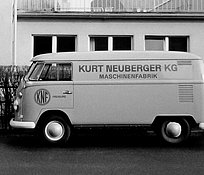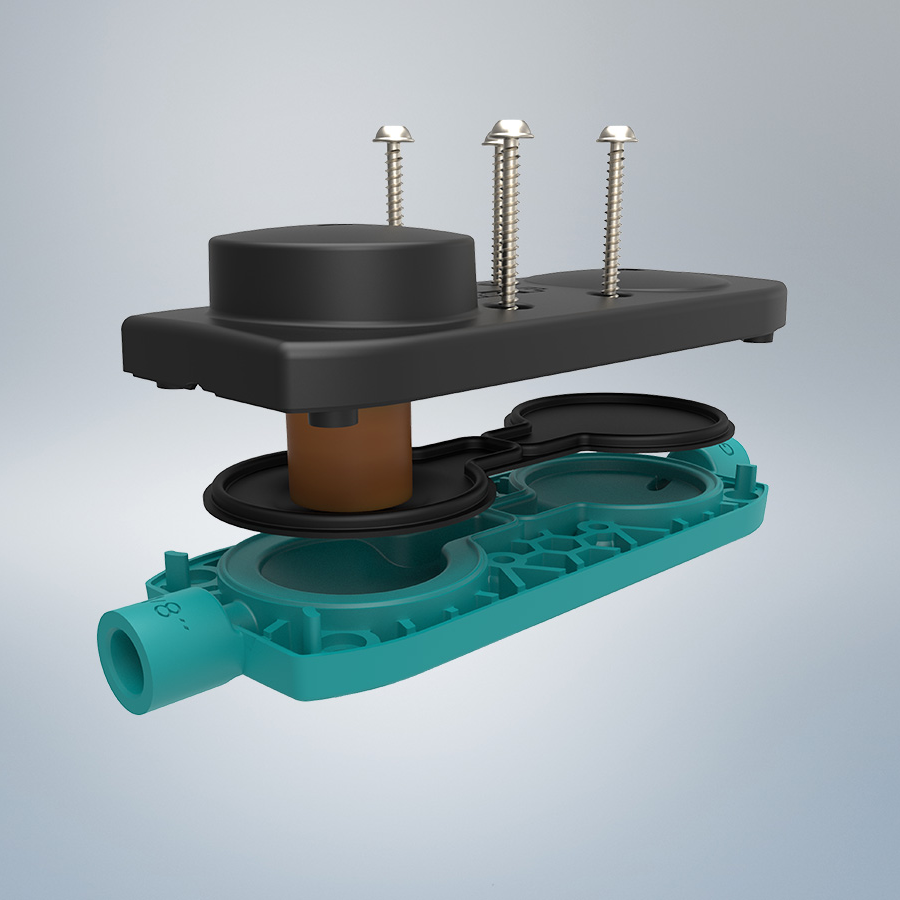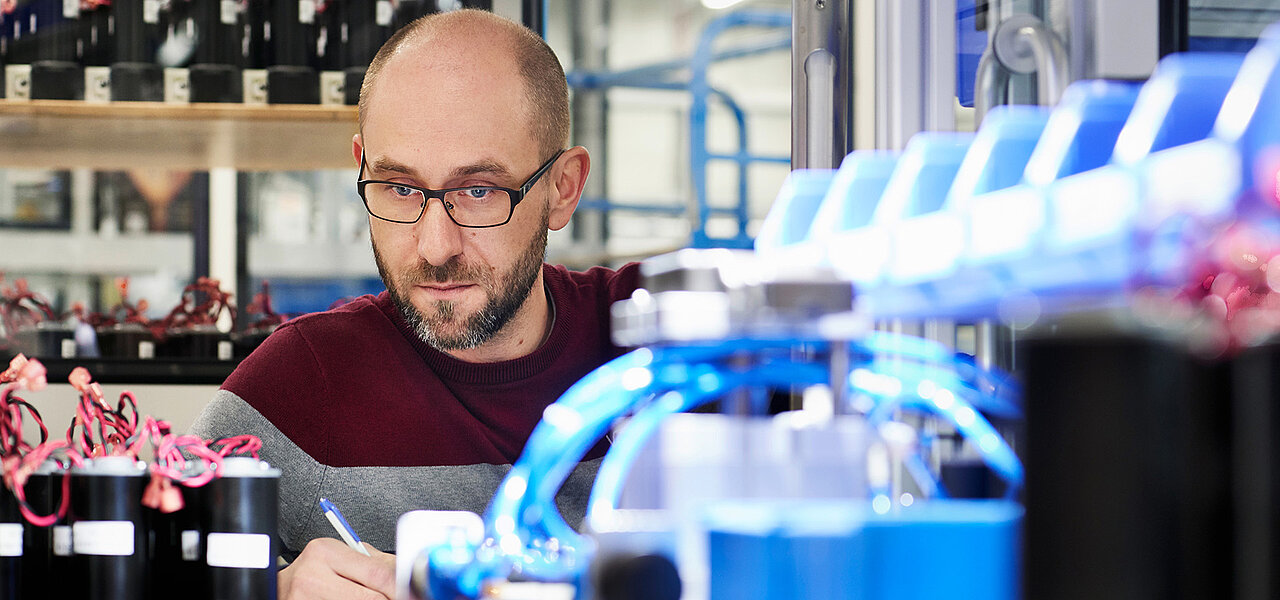
Making the Choice: Comparing Diaphragm Pumps and Gear Pumps
Gear and diaphragm pumps often come into play when choosing the right pump for a fluid application. Comparing diaphragm and gear pumps and understanding their maintenance, flow and reliability characteristics can help determine the best pump for the job.
Understanding Gear Pumps
Gear pumps operate on a simple principle. They use rotating gears to force fluid through the cavities between the gear teeth. As they mesh, the gears create suction and discharge, effectively moving the fluid from the inlet to the outlet. Gear pumps typically come in two types: internal gear pumps, which are suitable for viscous fluids with solid particles, and external gear pumps, which perform better with lower-viscosity fluids.
They cover a wide range of applications in various industries, from medical diagnostics such as flow cytometry to printing and industrial applications. In the chemical industry, for example, they transfer resins, pigments, and polymers. Industries such as paint and construction also rely on their ability to move viscous materials. In the petroleum industry, gear pumps move oils and fuels. And even the food industry benefits from their capabilities, using them to pump syrups, creams, and molasses.

Understanding Diaphragm Pumps
Diaphragm pumps work on a different principle: a drive mechanism causes a connecting rod to reciprocate, which moves an elastomer diaphragm up and down, drawing in the fluid through the inlet valve on the down stroke and discharging them through the outlet valve on the up stroke. This design makes them self-priming, safe to run dry, highly versatile, and capable of handling a wide range of liquids and gases.
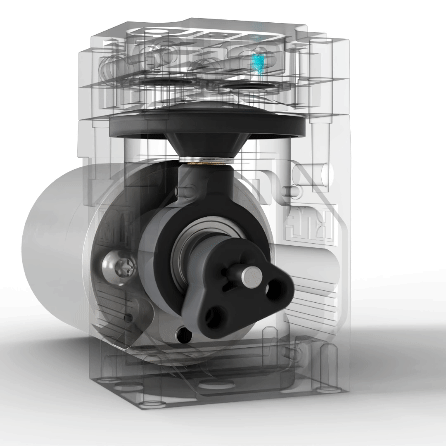
They excel at transferring a wide variety of gaseous and liquid fluids, including viscous, abrasive or shear-sensitive media. Their intrinsic safety, due to the absolute separation of the fluid from the mechanical parts, makes them ideal for hazardous or potentially explosive environments. Industries that require versatile pumping solutions often choose diaphragm pumps for their flexibility and reliability.
Comparing Diaphragm Pumps and Gear Pumps: Reliability and Lifetime Costs
When comparing gear and diaphragm pumps, several factors beyond the initial purchase price play a role in determining lifetime costs. In particular, maintenance and energy consumption are critical. Gear pumps tend to require more frequent maintenance due to wear on the rotating internal gears that are in constant contact with the fluid. As the gears deteriorate, the efficiency of the pump decreases, which can result in varying flow rates, internal leakage, or failure. Maintaining a gear pump can be more complex, and replacing gears or seals may require specialized expertise, resulting in considerable downtime.
Diaphragm pumps operate with less internal friction because the fluid is moved by a flexible diaphragm rather than by mechanical parts in direct contact with each other. Although diaphragms and valves can wear over time, they wear less quickly than gears and are easier to replace, especially if they are modular in design. This reduces the risk of internal leakage or loss of performance. In addition, diaphragm pumps can handle a wider range of fluids, including corrosive and abrasive materials, without significant wear, making them more reliable in demanding environments.
Flow and Pulsation Characteristics
Both gear pumps and diaphragm pumps can deliver high flow rates, but they differ significantly in terms of pulsation and flow consistency. Gear pumps provide a smooth, continuous flow with very low pulsation due to the continuous meshing of the gears, which creates a steady, non-fluctuating stream of fluid. This makes gear pumps suitable for applications where consistent, non-pulsating flow is critical.
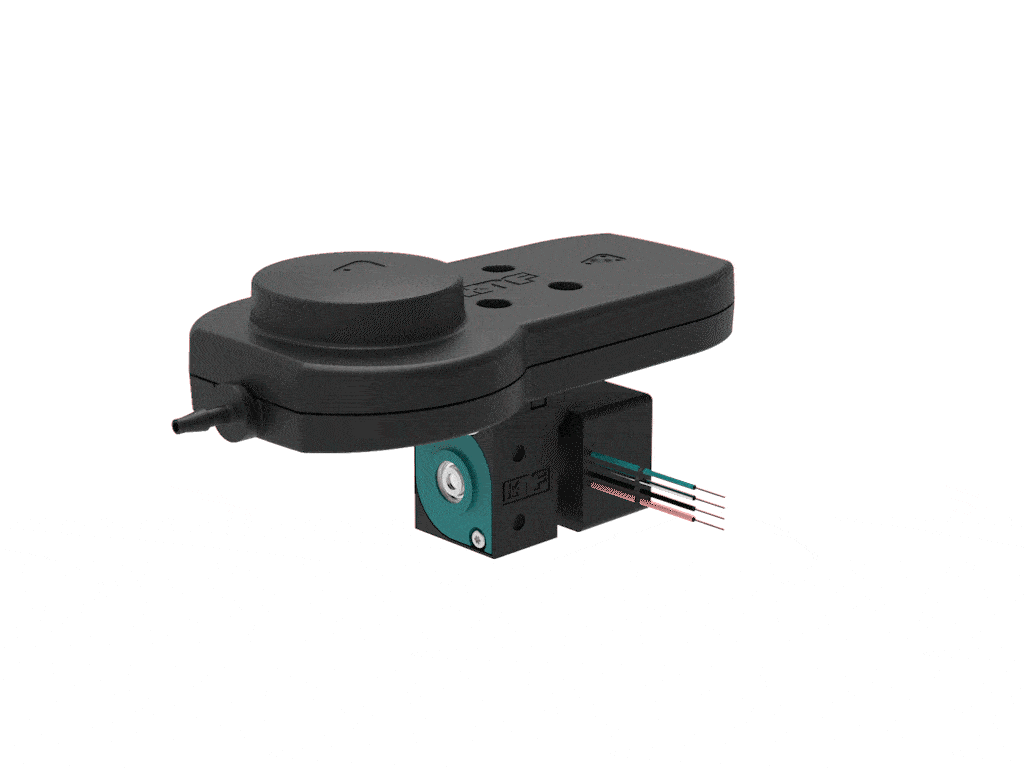
While diaphragm pumps can achieve significant flow rates, they tend to exhibit more pulsation due to their reciprocating motion. However, this is minimized through design innovations such as multi-diaphragm configurations or integrated dampeners. By reducing pulsation to almost imperceptible levels, the Smooth Flow Technology by KNF already allows diaphragm pumps to replace gear and peristaltic pumps in many applications, while offering the unique advantages of diaphragm pumps. They can also be used in areas as vital as flow cytometry, where particularly smooth flow is essential.
Pressure and Suction Capabilities
Standard diaphragm pumps like the KNF FP 1.400 achieve a maximum pressure of 6 bar (rel.). This is why diaphragm pumps are mostly used in applications where a high maximum pressure is not the primary requirement. Gear pumps are characterized by their ability to deliver higher discharge pressures between 100 and 300 bar, making them suitable for applications such as hydraulic systems and fuel injection.

A major advantage of diaphragm pumps is their high suction capacity, which makes them self-priming, allowing fluid to be drawn into the pump without the need for external priming. This feature makes them ideal for applications where the pump must start dry or handle intermittent flow. In addition, diaphragm pumps experience much less cavitation, reducing the formation of air bubbles that can cause problems in many applications. Gear pumps, on the other hand, generally have lower suction capability and are often not self-priming. They are also more prone to cavitation because their often fast-moving gears can act like a turbine, creating turbulence in the fluid due to rapid internal suction and pressure changes.
Contamination in Fluid Transfer
When it comes to contamination risks, gear pumps can pose challenges due to the potential wear and tear of their internal components. Over time, the gears can deteriorate, causing particles or fragments of the gears to break off and contaminate the fluid or system. This can affect the quality of the fluid being pumped and lead to reduced performance or even system failure.
Diaphragm pumps, on the other hand, are designed without moving seals or internal parts that can scrape against each other, reducing the risk of contamination. This ensures cleaner, more reliable pumping over time, making diaphragm pumps the preferred choice for applications where fluid purity is critical.
Use with Particulates and Shear-Sensitive Media
Gear pumps are not always recommended when handling particulate or shear-sensitive fluids. The close tolerances between the gears can trap and crush particles, causing internal damage and performance problems. The mechanical action of the gears also subjects the fluid to shear forces, making gear pumps less suitable for applications involving shear-sensitive media, such as certain chemicals, emulsions, or biological materials. For example, in applications such as UV ink transfer for the inkjet industry, the increased cavitation that can often occur in gear pumps can lead to premature curing of the ink, causing it to harden or clump in the system. Over time, these interactions can compromise the integrity of the fluid or cause wear on the pump itself. In some applications, such as the transfer of wax-based inks, these high shear forces can be advantageous, as the rough media handling of a gear pump acts as an additional mixer.
Diaphragm pumps, on the other hand, are better suited for handling particulate and shear-sensitive media. Their design minimizes contact between the fluid and moving parts, preventing particles from being crushed or damaged. In addition, the pumping action generates low shear forces, ideal for applications involving delicate or shear-sensitive materials. This gentle handling also eliminates cavitation, making diaphragm pumps highly reliable for transferring fluids that must maintain their integrity throughout the process.
Choosing the Right Pump for Every Application
When deciding between gear and diaphragm pumps, several factors should guide the decision. Consideration should be given to the nature of the fluid being pumped, including its viscosity, abrasiveness, and shear sensitivity. In addition, it is important to determine the operating environment, especially the potential for dry running, and to evaluate the flow requirements, whether a constant flow or the ability to handle variable flow rates is required.
By evaluating these factors and understanding the strengths and limitations of each pump type, the best option can be selected for specific applications.
Get in touch with KNF to learn more about our custom diaphragm pump solutions.
75 Years: KNF Celebrates Company Anniversary
A treasure chest filled with memories, facts and stories. Learn more about KNF’s company history.
